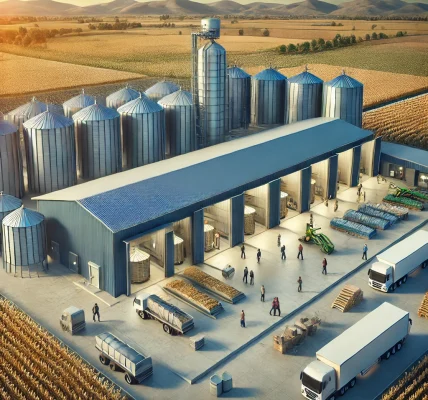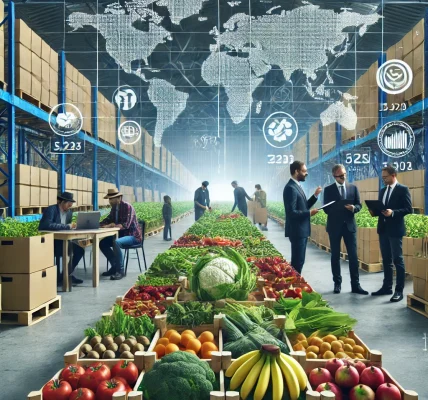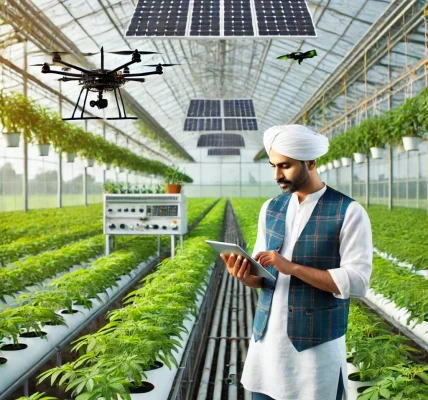Introduction
Agriculture is the backbone of many economies, and with the rise of technology-driven solutions, governments worldwide are focusing on smart and digital farming to enhance productivity and sustainability. In India, several initiatives aim to modernize agriculture through IoT (Internet of Things), AI-based analytics, precision farming, and mobile applications that provide real-time assistance to farmers.
This blog explores how the government is promoting smart and digital farming, the various schemes and incentives available, and a step-by-step guide to applying for benefits without an agent.
1. What is Smart and Digital Farming?
Smart and digital farming involves the use of advanced technologies like:
- Drones for crop monitoring and pesticide spraying.
- IoT sensors for soil health analysis and automated irrigation.
- AI-powered decision-making tools for precision farming.
- Mobile applications that offer weather forecasts and market price updates.
- Blockchain technology for supply chain transparency.
These innovations help increase crop yield, reduce resource wastage, and improve farmers’ income.
2. Key Government Initiatives for Smart and Digital Farming
The Indian government has launched several programs to support the adoption of technology in agriculture:
a) Digital Agriculture Mission 2021-2025
- Focuses on AI, remote sensing, drones, and blockchain in farming.
- Encourages the digitization of farm records for better planning.
- Farmers can access real-time insights via mobile apps.
b) National e-Governance Plan in Agriculture (NeGPA)
- Promotes ICT (Information & Communication Technology) in agriculture.
- Supports states in developing digital platforms for farmers.
- Provides advisory services on crop health, weather conditions, and market trends.
c) Kisan Drone Scheme
- Subsidies for farmers to buy or rent drones for pesticide spraying, crop monitoring, and yield estimation.
- Offers financial assistance to FPOs (Farmer Producer Organizations) and rural entrepreneurs.
d) Sub-Mission on Agricultural Mechanization (SMAM)
- Provides 50-80% subsidies on precision farming equipment.
- Encourages robotics and automation in agriculture.
e) AgriStack Initiative
- Develops a unified database of farmers.
- Integrates land records, soil health, and climate information.
- Helps AI-powered solutions recommend best farming practices.
f) eNAM (Electronic National Agriculture Market)
- Connects farmers to online marketplaces for better price realization.
- Eliminates middlemen and ensures direct selling of produce.
3. How to Apply for Government Schemes Without an Agent
Farmers can apply for smart farming schemes directly, without paying unnecessary fees to agents. Here’s how:
Step 1: Check Eligibility
- Must be a registered farmer with state agriculture departments.
- Should have a valid Aadhaar-linked bank account.
- Some schemes prioritize small and marginal farmers.
Step 2: Gather Required Documents
- Aadhaar Card
- Land ownership or lease papers
- Bank account details with IFSC code
- Soil health reports (if applicable)
- Quotation from authorized equipment dealers (for subsidies on machinery)
Step 3: Online Application Process
- Visit the official portals:
- https://agrimachinery.nic.in for SMAM & mechanization subsidies.
- https://farmer.gov.in for eNAM & digital services.
- State agriculture department websites for regional initiatives.
- Register using your Aadhaar-linked mobile number.
- Select the desired scheme and fill in the application form.
- Upload required documents and submit the application.
- Track application status online using your reference number.
Step 4: Offline Application Process
- Visit the nearest agriculture office or Common Service Center (CSC).
- Request an application form for the relevant scheme.
- Fill it out, attach necessary documents, and submit it to the officer.
- Collect your acknowledgment receipt for tracking.
4. Benefits of Smart and Digital Farming
- Higher Productivity: Precision farming ensures optimal resource use.
- Cost Savings: Reduces water, fertilizer, and pesticide wastage.
- Better Decision-Making: AI-powered insights guide farmers on the best planting time, soil health, and pest control.
- Market Access: Direct selling through eNAM increases profits.
- Sustainability: Reduces environmental impact and promotes eco-friendly practices.
5. Legal Precautions to Avoid Fraud
- Only apply through official government portals.
- Do not pay agents for scheme registration.
- Avoid sharing Aadhaar OTP or banking details with unknown persons.
- Keep copies of all submitted forms and application receipts.
Conclusion
Governments are actively promoting smart and digital farming to revolutionize agriculture. By leveraging AI, IoT, drones, and digital platforms, farmers can boost efficiency, reduce costs, and maximize profits. Applying independently for these schemes ensures farmers get direct benefits without middlemen.
To stay updated, farmers should regularly visit official government websites and consult local agricultural officers.
Did you find this guide helpful? Share it with fellow farmers to spread awareness about smart and digital farming initiatives! 🌾🚜




